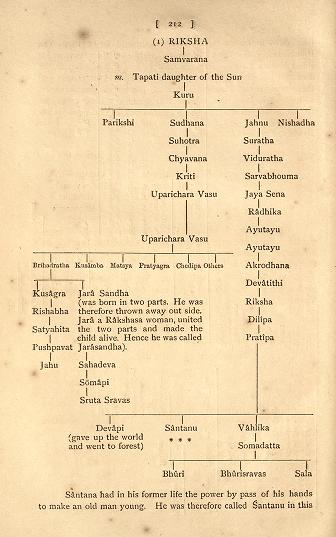VASATI
Vasati
was an ancient republic tribe known to Panini and mentioned in Mahabharat
(I.89.50), (1.94), (II.48.14), (VI.18.12), (VI.47.14), (VI.112.109),
(VIII.4.36), (VIII.30.47), (VIII.51.16).
Variants
of name :
• Abastani (by Alexander Cunningham)
• Basati
• Basatia
• Vasatah = Janpad of Vasatis
•
Vasatayah = Janpad of Vasatis
• Vasati
• Vasatis
• Ossadioi (Greek)
• Ossadii (by Alexander Cunningham)
• Osset
• Vashati (AS, p.249)
Jat clans :
• Basati
• Basatia
• Bisati
• Digor
• Visati
Mention by Panini :
Vasati,
village settlement is mentioned by Panini in Ashtadhyayi.
Vasati is mentioned by Panini in Ashtadhyayi.
Mention
by Panini :
Vasatika is mentioned by Panini in Ashtadhyayi.
History
:
V. S. Agrawala mentions Vishayas known to Panini which includes
- Vasati, under Rajanyadi (IV.2.53).
V
S Agarwal writes names of some important tribes in the Ganpath,
which deserve to be mentioned as being of considerable importance.
We are indebted to the Greek historians of Alexander for the information
that most of these were republics. These tribes include - Vasati
(IV.2.53; Rajanyadi Gan) identified with Greek Ossadioi, settled
some where in the region of confluence of the Chenab and Sutlej
with the Indus.
Alexander Cunningham writes that ...The country at the confluence
of the Panjab rivers is assigned by Curtius to the Sambracae or
Sabracae, and by Diodorus to the Sambastae. They are not mentioned
by Arrian, at least under this name; but I think that the Ossadii,
who tendered their allegiance to Alexander at the confluence of
the rivers, were the same people. It is probable also that the Abastani,
who were subdued by Perdikks, belonged to the same class. Perdikks
had been dispatched by Alexander to the east of the Ravi River,
where he captured a town which I have identified with Harapa. I
infer that his campaign must have been an extended one, as Alexander,
whose own movements had been delayed by his wound, was still obliged
to halt for him at the confluence of the rivers.
Tej
Ram Sharma writes that In the post-paninian period, distinction
between Janpad and visaya was lost, both being called by the same
names, for example Angh, Vangh, Sumhah, and Pundrh. In some Jan-pads
like Rajanya, the distinction was retained, as Rajanyak denoted
a visaya and Rajanyah, the Janpad of the Rajanya tribe. Similarly
we have Vasatah, Vasatayah ; Gandhar, Gandharayah ; and Saibah,
Sibiyah. Other smaller units were only visayas or estates like Bailvavanak,
Atmakameyak, Bhaurikavidh and Aisukari-bhakt.
Jat
History :
Basatia, Basati, Vasati, Basatiya is gotra of Jats found in Haryana.
They were dwelling in republic known as Vasati. They were with Kauravs
in Mahabharat war on Day one and two.
Branches of Nagvansh are - 1. Vasati / Bains 2. Taxak 3. Aulak 4.
Kalkal 5. Kal / Kalidhaman / Kalkhande 6. Meeth 7. Bharshiv 8. Bharaich.
Vasati or Vais are descendents of Nagavanshi King Vasuki.
Dagar / Dagor (Jat clan) - Pliny first mentions this Jat clan in
Central Asia as 'Tagors' who went westwards with the Yue-che hordes
in second century B.C. Maencheu Helfen identifies them with the
Asis and the Tokhars. S.P. Tolstov identifies the Turkish tribe
Duker, with the Tokhars. Digor is also mentioned as one of the four
tribes of the Ossets (Vasati of Indian works). They called their
country on the Urukh river and its tributaries as Digor, or Digur,
which name appears in the Geography of Moses, of Khorene as As-Digor.
These Digors were the ancestors of the Dagar Jats. P.C. Bagchi believes
the Dogar and Tukhars were one and the same. The ruling family of
Orchha- Tikamgarh, was called Digora.
Genealogy of Vasati :

Ancestry
of Kuru as per Bhagavat Puran
Vasati
was a Chandravanshi King and son of Janmejay. It was also used for
one of The Mahabharat Tribes.
Samvaran
(m.Tapati) → Kuru (m.Vahini) → Avikshit → Parikshit
→ Kakshasen + Ugrasen + Chitrasen + Indrasen + Sushen + Bhimsen.
Samvaran (m.Tapati) → Kuru (m.Vahini) → Janmejay
→ Dhritarashtra (who was the eldest) + Pandu + Valhik + Nishadh
+ Jamvunad + Kundodar + Padati + Vasati.
Source
:
https://www.jatland.com/
home/Vasati

